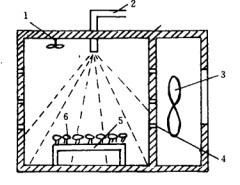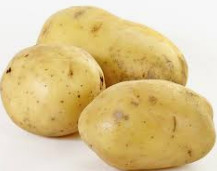Modeling and Simulation of potato microwave drying kinetics
Absrtact: The temperature and moisture content of potato dice dried at different microwave power (600, 900, 1200 and 1500W) were tested by a self-made microwave hot-air coupled drying system. The microwave drying curve, drying rate curve and optimal microwave power density were obtained, and the microwave drying kinetics model and effective water diffusion model of potato dice were established.

The effective water diffusivity model of potato dice was substituted into COMSOL Multiphysics software, and three coupled models of electromagnetic field, solid heat transfer and dilute matter transfer were established. The results showed that the microwave drying rate of potato dice entered a deceleration period after 270 s acceleration period. The optimum microwave power density of microwave drying equipment was 6 W/g, and the drying model could be based on Page equation. The effective water diffusivity of potato diced by microwave drying was 4.35 *10-9-9.02 *10-9 m2/s.
Key words: potato microwave drying; dynamic model; COMSOL simulation

Microwave drying is widely used in food industry because of its fast drying rate, high efficiency and low energy consumption. Yili et al. established a microwave hot air drying kinetic model and effective water diffusion coefficient, which could predict the drying time of Papaya under different conditions. Wei Lingjun et al. studied the thermophysical and dielectric properties of chicken at -5-95 C and 2 450 MHz.
The results showed that the ideal rotating speed of turntable was 7.5 r/min in the microwave heating process of household microwave oven; Taoman et al. studied the characteristics of microwave drying of peony seeds. Taking the drying rate, shell bursting rate and ripening rate of peony as evaluation indexes, the optimum drying process of peony seeds by microwave was obtained by comprehensive balance method, which was 20 s drying time, 60 s intermittent time and 2 layers of material layer thickness.
In order to understand the drying state of materials in microwave drying process more intuitively, some scholars used different simulation software to simulate the process of microwave heating and drying food. Pitchai and others used Quickwave in FDTD to simulate the heating process of food in microwave oven, and the temperature distribution obtained was similar to the drying test of materials. Liu and others used FEMAP and POTO-Series software to simulate the heating process of food in microwave oven, and compared with the experimental results.
PEDREO-MOLINA et al. discussed the heating conditions at different load locations by thermal imaging method; Zhang Ke et al. simulated the heating process of food packaging in microwave oven using COMSOL Multiphysics software, established the Electromagnetic-Thermal coupling model of dielectric properties of food changing with time, and carried out experimental verification.
These studies either only set up mathematical models under microwave heating or use simulation software to couple electromagnetic field with solid heat transfer field. Because it is difficult to monitor the change of drying state (i.e. temperature and moisture content) of materials by experimental means under microwave environment, it is necessary to predict the drying state of materials under microwave heating by simulation.
The microwave drying dynamics model and effective water diffusion coefficient model of potatoes were established. The electromagnetic field, solid heat transfer and dilute matter transfer coupled models were established with COMSOL Multiphysics as simulation software. The water content and temperature of potatoes during microwave heating were simulated with microwave power and heating time, and the experimental verification was carried out.